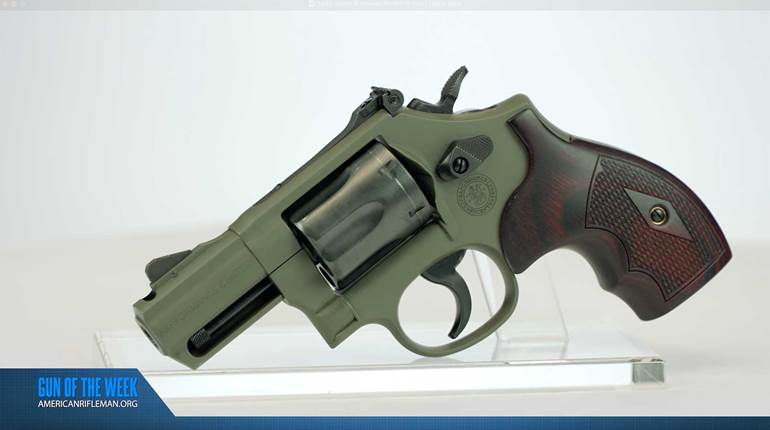There are many German handgun designs that are popular and well-known, such as the Luger, the Walther P38 or the Mauser C96 "Broomhandle." However, another popular and underappreciated design at the time was the Mauser Model 1914, which eventually evolved into the Model 1934. Watch our "American Rifleman Television" I Have This Old Gun segment above to hear the history of this unique sidearm.
"At the tail end of the 19th century, there were a number of semi-automatic handgun designs emerging, and one of the iconic designs that we see right around the turn of the century is from Mauser, and that is the C96. After Mauser developed the iconic C96, they started looking at some other different action designs and different concepts," American Rifleman Executive Editor Evan Brune said. "And one of the things that Mauser wanted to develop was just a simple blowback-actuated design. Mauser tasked an engineer named Josef Nickl to develop what would eventually become a family of handguns."

The initial blowback design was set to be chambered for the 9 mm Luger cartridge, but this prototype design failed because the 9 mm cartridge was deemed to be too powerful for use in a blowback-operated handgun slide. However, the design was usable for some of the less powerful handgun cartridges of the time, notably .25 ACP and .32 ACP.
"Among Mauser pistol collectors, the terms are used of 'Model 1910' and 'Model 1914,' but these are really just made up nomenclature, so collectors can tell them apart," American Rifleman contributor Kenneth L. Smith-Christmas said. "In actuality, when Mauser developed this style of pistol in the early 20th century, they simply referred to it by the caliber. Now you had the first one that came out was a .25 ACP. And this actually came out long before 1910, like 1906, and by 1908, they're already in America. And based on that frame, then the decision was, 'Well, we'll up step this gun to a .32 ACP.' And the result was what collectors call the Model 1914."

The .32 ACP-chambered Model 1914 saw extensive use, as the cartridge was used widely as a military and law-enforcement cartridge in early 20th-century Europe. It saw service in the German army during World War I, as well as extensive use in police and civilian circles during the inter-war era.
"The Model 1914 Mauser has a couple of interesting features that we think of as really unique. They were interesting features at the time," Brune said. "And this, of course, was a period when different designers and different companies were experimenting with different mechanisms and aspects of ergonomics in a handgun."
Two notable features that are different than they first appear are the controls on the left side of the frame. At first, it looks like a decocking or even a slide-stop lever sitting above a push-button magazine release. However, both controls have to do with the safety. Sweeping the lever down puts the gun on safe, while pushing the button readies the gun to fire. A heel-style magazine release is what retains the magazine.

"The little 1934s that bear Waffenampts, depending on, you know, to which entity they were issued, bring a little more value than the ones that do not," American Rifleman Field Editor Garry James said. "As far as a fun shooting little gun, matter of fact, it was the first auto pistol like that I ever purchased was a 1934, and I fired the heck out of it when I was a kid. I wouldn't feel underarmed if I wanted to carry a .32 for a pocket piece. I still consider it a very, very, very practical, viable little pistol."
To watch complete segments of past episodes of American Rifleman TV, go to americanrifleman.org/artv. For all-new episodes of ARTV, tune in Wednesday nights to Outdoor Channel 8:30 p.m. and 11:30 p.m. EST.

























